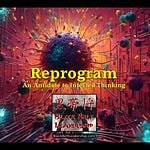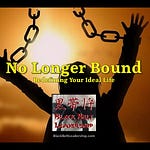Did you ever play with wooden blocks? You know, the Alphabet wooden blocks that millions of families throughout history have used to help teach their children important skills, such as recognizing letters and colors, learning to put letters together to form words, and developing critical motor skills by stacking blocks.
But do you know the history of the alphabet block?
The humble origins of the alphabet block can be traced back to the 16th century. English author and inventor, Sir Hugh Plat, described alphabet blocks in his classic 1594 work, “The Jewell House of Art and Nature.”
Considered one of the most influential thinkers of the 17th Century Enlightenment period, English philosopher and physician, John Locke, suggested in his 1693 work, “Some Thoughts Concerning Education,” that alphabet blocks would make learning to read more enjoyable.
“There may be dice, and play things, with the letters on them to teach children the alphabet by playing; and twenty other ways may be found, suitable to their particular tempers, to make this kind of learning a sport to them.”
In 1837, Friedrich Wilhelm Froebel introduced geometric blocks carved from wood, which he called “Froebel’s gifts.” Froebel was a German pedagogue who laid the foundation for the Kindergarten movement based on the recognition that children have unique needs and capabilities. He believed children are inherently creative and learn best through plan and hands-on learning experiences. Froebel established the first kindergarten (garden of children) in Blankenburg, Germany in 1837.
He introduced the use of educational materials, which included a series of play objects, consisting of simple shapes and forms, to teach basic concepts through hands-on exploration. Children were encouraged to engage in creative play, developing fine motor skills and learning the rudiments of geometry and mathematics in the process.
In 1870, Milton Bradley created a set of building blocks based on Frobel’s work, “Bradley’s Original Kindergarten Alphabet and Building Blocks.” Like Frobel’s gifts, the blocks came in a variety of geometric shapes, but Bradley added letters and numbers to the blocks.
Bradley’s seemingly insignificant addition of letters and numbers turned Frobel’s shapes into a didactic learning tool that forever changed the educational landscape in homes and classrooms the world over.
Samuel L. Hill became the first American manufacturer to mass-produce alphabet blocks, obtaining a patent for his wooden blocks with letters on them in 1867. His Brooklyn plant mass-produced his alphabet blocks as an early education and learning tool.
Between Milton Bradley and Samuel Hill, the quintessential alphabet block had gone mainstream. Alphabet blocks were now available to the masses.
Adeline Dutton Train Whitney patented an early alphabet block system in 1882 and significantly expanded how alphabet blocks were used in education.
Today, children learn and play with ABC blocks.
They stack them, sort them, spell with them, socialize with them, and sometimes, they stumble over them…which leads me to today’s life lesson from wooden ABC blocks.
Stumbling blocks are obstacles or hindrances that prevent progress, impede understanding, or prohibit consensus or agreement. They make it difficult for us to move forward, achieve progress, or accomplish a goal or objective. By definition, stumbling blocks are obstacles, barriers, hurdles, or impediments that constrain forward momentum.
It’s a figurative stone in our way that could cause us to stumble and fall.
The term stumbling block has been around for most of human history. The Old Testament book of Leviticus warns against putting a “Miksol,” a stumbling block, in front of the blind. The Greek word is “Skandalon”, from which we get the English word scandal.
The earliest known use of the English term, stumbling block, was in the 1520s. It originally meant a tree stump over which one trips. Today, it figuratively describes an obstacle or hindrance to progress or success.
Stumbling blocks are considered bad because they refer to something that hinders or obstructs our progress, impedes understanding, or causes us to falter or fail. Some common examples of stumbling blocks (besides the physical ones) include:
· Personal Beliefs
· Personal Biases
· Lack of Resources
· Lack of Education
· Lack of Money
· Habits
· Rules and Regulations
· Politics
· Other People
· Failure to Think
There are others, some unique to each of us, that tend to trip us up, causing us to stumble and fall. These faux pas can be embarrassing, and at times humiliating. If we embrace them as inevitable or unavoidable they can limit our thinking, stifle our progress, and leave us scarred, marred, and scared to move forward.
This is not a recipe for success.
I remember as a kid playing with alphabet blocks. My sister and I would have contests to see who could stack them the highest. My parents would use them to teach us letters, numbers, and color recognition, as well as how to assemble letters to form words.
But if you didn’t pick them up, and later came running through the den, it was quite easy to step on a block, take a tumble, and crash into the floor. Even worse was to have one of my parents step on a wooden block and stumble, trip, or fall.
One of the early things I discovered about alphabet blocks was that they were sturdy. After all, they were made of wood. If I stacked them carefully, making a base a few blocks high and several blocks wide, I could reach things on the counter that I couldn’t reach otherwise, even if I was standing on my tiptoes.
A block that could cause me to stumble and fall could also be used as a stepping stone to help me reach places I couldn’t reach on my own.
What might be a stumbling block for one person may not be for another.
How we use the blocks before us makes all the difference.
So, here’s my question.
Are you stumbling because of the limitations in your life, or are you building upon them to remove the limitations in your life?
To turn stumbling blocks into stacking blocks so you can reach places you couldn’t reach before, you’ve got to do the following four things.
First, reframe your perspective.
Start seeing obstacles as opportunities for learning and growth. Shift your perspective to see the situation in a positive light. Recognize that setbacks are only temporary unless we choose to stop moving forward.
Secondly, learn from your mistakes.
See each failure as a step toward success. You identified something that didn’t work. Learn from it, don’t repeat it, and try something new. Use your mistakes to try new and innovative ways to accomplish what didn’t work before.
Thirdly, build a support network.
Connect with other people who can help you work through the challenges you’re facing. Find a mentor, a coach, or a supportive friend. Seek out others who have life experience you don’t and are willing to share it with you. You can learn from their wisdom, insight, and experience, including the lessons they learned from success and from failure.
Fourth, address your limiting beliefs.
Albert Einstein famously said that we can’t solve the problems we face with the same level of thinking that created them. So, to turn stumbling blocks into stacking blocks so you can reach higher and farther, you’ve got to stretch your thinking. Be clear on your goals and objectives. Challenge your limiting beliefs and fears. You must cultivate a mindset of resilience and optimism if you want to turn stumbling blocks into stacking blocks.
As we wrap up, let me share a spoiler alert…
We will ALL experience stumbling blocks at times in our lives. Many of these stumbling blocks are of our own making. Stumbling and falling is okay, as long as you get back up.
But the good news is this…
The very same blocks that can cause you to stumble and fall can also be repurposed and used to help you reach heights you were never able to achieve.
The very same blocks that cause you to stumble and fall can be repurposed to create the steps that elevate you to reach and achieve things that were just outside the reach of your fingers…and now they are within your grasp.
This is the life lesson of the wooden alphabet block.
Let me close with a comment and a question that I posed earlier.
What might be a stumbling block for one person may not be for another.
How we use the blocks before us makes all the difference.
So, here’s my question.
Are you stumbling because of the limitations in your life, or are you building upon them to remove the limitations in your life?












Share this post